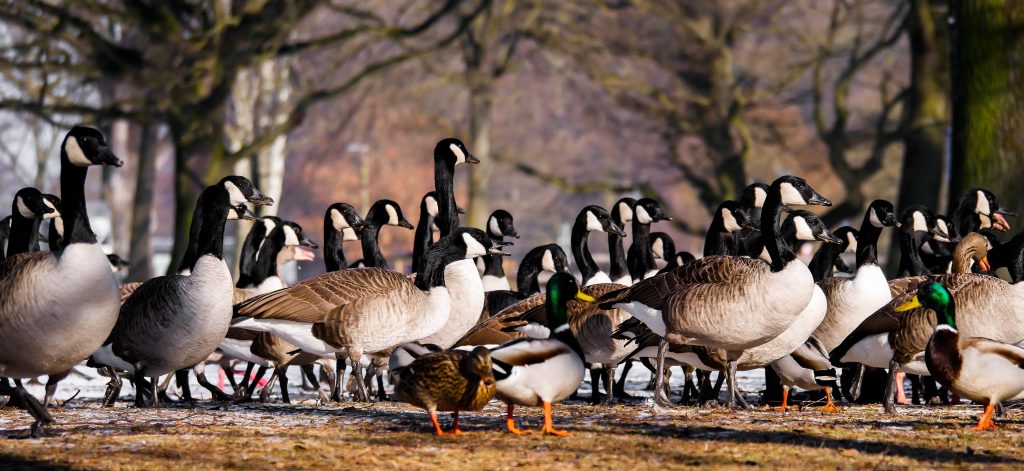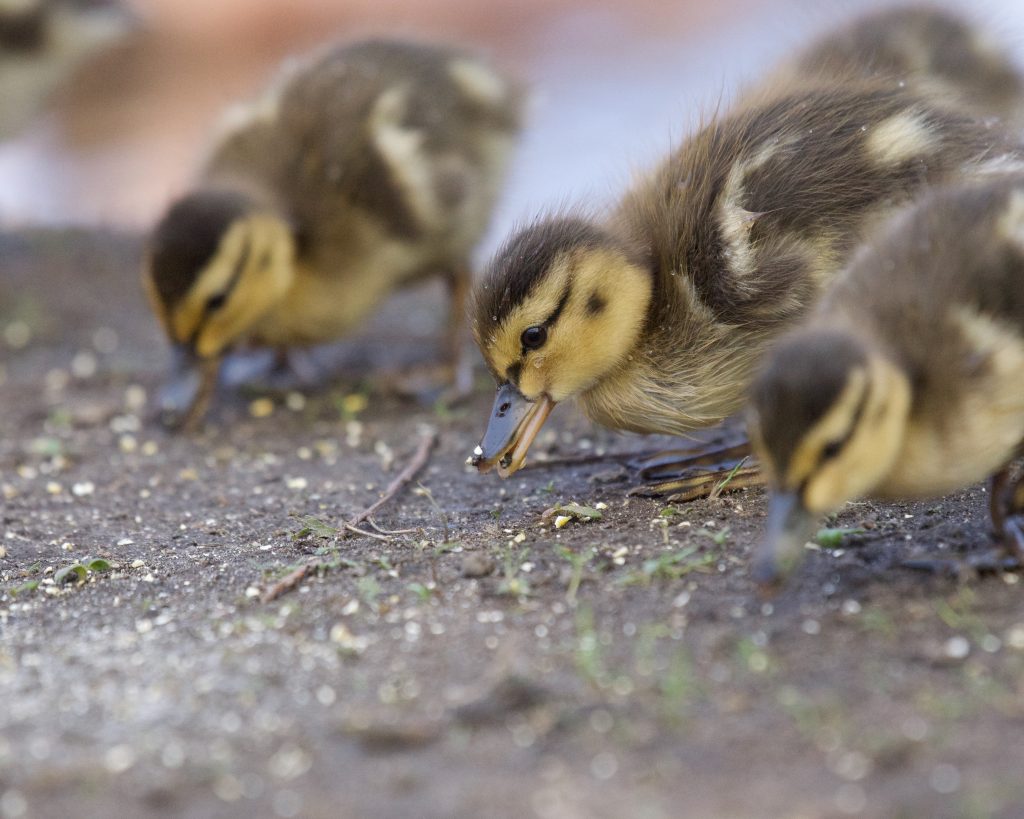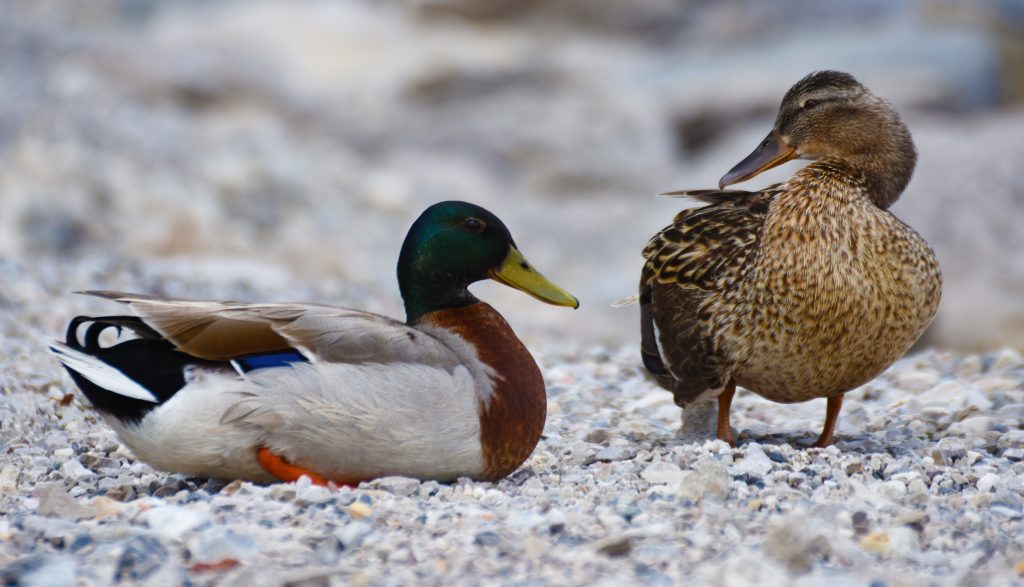All about Birds
5 Interesting Facts About Ducks
Ducks are interesting creatures, and there are many things that you may not know about them. Here are five facts about ducks that will surprise you.
Ducks are interesting creatures, and there are many things that you may not know about them. Here are five facts about ducks that will surprise you:
- Ducks have webbed feet, which help them swim.
- Ducks eat various food, including plants, insects, and small animals.
- Male ducks are called drakes, and female ducks are called hens.
- Baby ducks are called ducklings.
- Some ducks can fly, but others cannot because of their body structure. Overall, ducks make interesting pets and birds to watch!
Ducks are social creatures and often live in groups

Ducks are among the most social of birds, with many species living in groups and forming close bonds with their flock mates. They communicate through various vocalizations, such as quacks, whistles, and other sounds. As well as visual behaviors like preening and posturing. Ducks also exhibit strong social hierarchies, which play an important role in their group dynamics. In the wild, ducks usually travel in flocks – from roaming along rivers and lakes to settling down on ponds and marshes.
When flying or landing together on the water, they often form a unique V-shaped formation, using the slipstreams created by other members to reduce wind resistance while they fly. Ducks will remain loyal to their flockmates even during migrations that may span entire continents. The sight of a duck flock is sure to light up any bird enthusiast’s eyes; if you’re lucky enough, you might even hear them sing their sweet chirps as they ascend into the sky!
Ducks have webbed feet, which help them swim

One of the birds’ most remarkable yet commonplace abilities is the ability to swim. Although how they manage it can be puzzling, most ducks and other waterfowl have unique physical features that enable them to stay afloat and propel themselves through the water. One such feature is webbed feet, which facilitate swimming by acting as oars or paddles when ducks dip their feet underwater and kick-off off the ground for momentum. The webbing increases surface area so small feathers can work together to capture maximum amounts of water with each thrust to move faster than the average winged creature.
If you’ve ever seen a duck in motion on a lake surface, you know how narrowly contained the propulsion from the webbed feet appears compared to how fluidly they glide along. It looks effortless and gives Ducks control, stability, speed, and agility when navigating open waters. Making webbed feet one of the core components of how birds swim. Moreover, this built-in advantage allows Ducks to feed more efficiently while staying safe from predators at all times! These amazing adaptations are not just limited to our favorite feathered friends. Many amphibious creatures have similar biomechanical designs that help them float over water rather than sink below its surface. It’s marvelous how nature has incorporated this trait into many species around us! Webbed feet are another great example of how nature has gifted some animals with incredible powers we could still only dream about!
Ducks eat a variety of food, including plants and insects

Ducks have a diet that varies depending on the species and the season. During spring and summer months, ducks tend to eat more vegetation, either by grazing or scavenging. This diet consists of water plants such as grasses, algae, sedges, rushes, fruits, and seeds. Ducks also hunt invertebrates like aquatic insects and worms to supplement their diet. In the winter and fall months, ducks feed mainly on seeds from weeds, stubble grains, grasses, and various grains produced locally around wetlands. In addition to this diet of plants and invertebrates, some duck species may also benefit from an animal protein found in fish eggs or wounded small animals like frogs or mice.
Therefore, ducks have a varied diet that provides them with the nutrients required for growth and survival throughout the year. No matter what terrain they inhabit or the season they face, they always find a way to satisfy their dietary needs with whatever resources are available. By understanding their diet more closely, we can help provide them with an optimal environment for surviving and thriving in our ecosystems. For example, by planting vegetation-rich areas near duck habitats, we provide them with more access to plants for nutrition; similarly, installing aquatic environments helps create an ideal habitat for birds that rely on morsels found beneath the surface of ponds, lakes or streams for sustenance during seasonal changes. All these habits play an important part in helping sustain duck populations worldwide. You never know how much impact your single action may have on these vital creatures!
Duck eggs are a popular food item in many cultures

Duck eggs are an incredible food item enjoyed in a variety of cultures around the world. Food cultures from East to West have a history that includes duck eggs and recipes highlighting the unique taste and texture these eggs provide. Humans have been eating duck eggs for centuries, and it is easy to see why! Nutrient-rich, delicious, and with a longer shelf life than other types of eggs, it is no surprise that they remain popular today.
There are many benefits associated with consuming duck eggs. They contain more Vitamin B12 than chicken eggs and are higher in Omega-3 fatty acids (especially beneficial if eaten raw). And provide more omega-6 fatty acids (good for keeping cholesterol levels low). Cooking duck eggs also brings out a unique flavor unlike any other type of egg. Whether boiled, scrambled, or fried, duck eggs can be a delicious addition to meals or enjoyed on their own. Duck eggs are truly one of nature’s most versatile food offerings. Which explains why they remain in high demand across the globe!
Some ducks can fly, while others cannot

Not all ducks can fly, but many do. Some duck species can take off and stay in the air for extended periods, while others may only do so for short distances. The size of a duck does not indicate whether or not it is capable of flight – some smaller duck species are better at flying than bigger ones. Most ducks become airborne during the daytime hours and late afternoon. However, a few species do also fly at night.
Generally speaking, smaller ducks with streamlined bodies tend to be more agile and better at flying long distances than their larger counterparts. As such, it helps to research the specific type of duck that interests you before purchasing it. Whether looking for a trail mate or an aviary companion, understanding which types can fly is important in finding the right pet for you or your family.
Ducks are social creatures that often live in groups. Their webbed feet help them swim and eat various food, including plants and insects. Duck eggs are a popular food item in many cultures, and some ducks can fly while others cannot. If you want to learn more about ducks or other bird species, check our blogs for more information. Thanks for reading!

